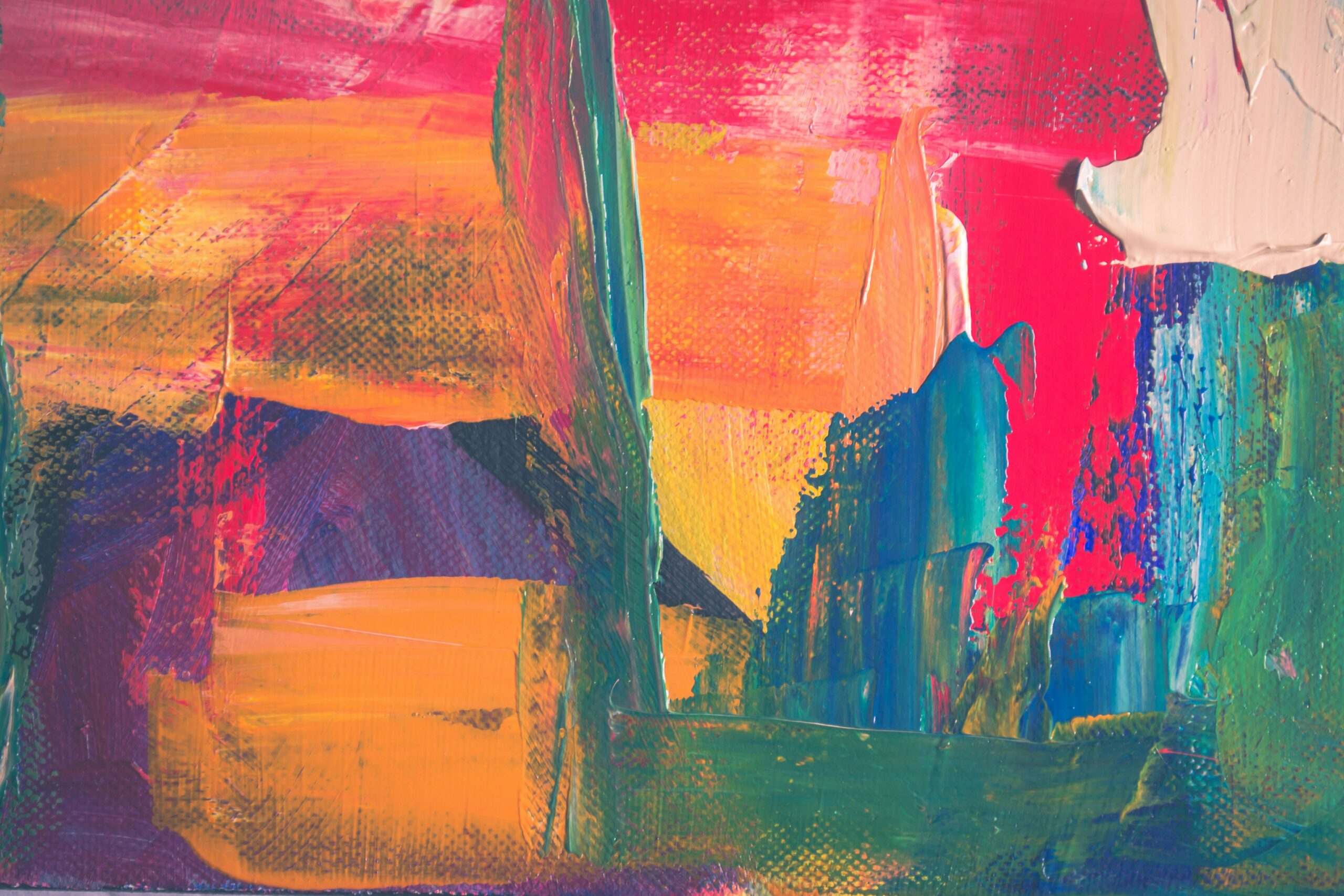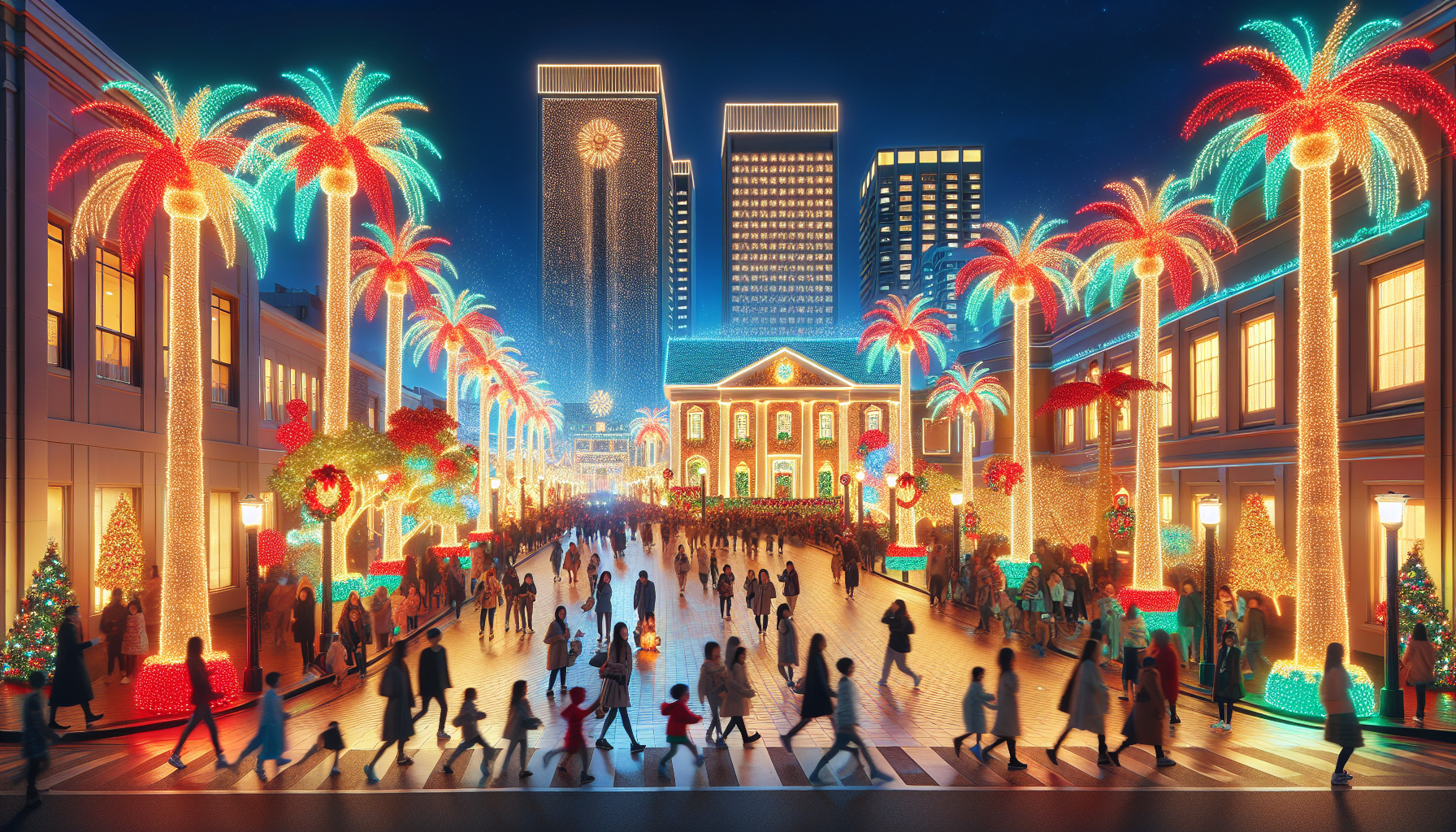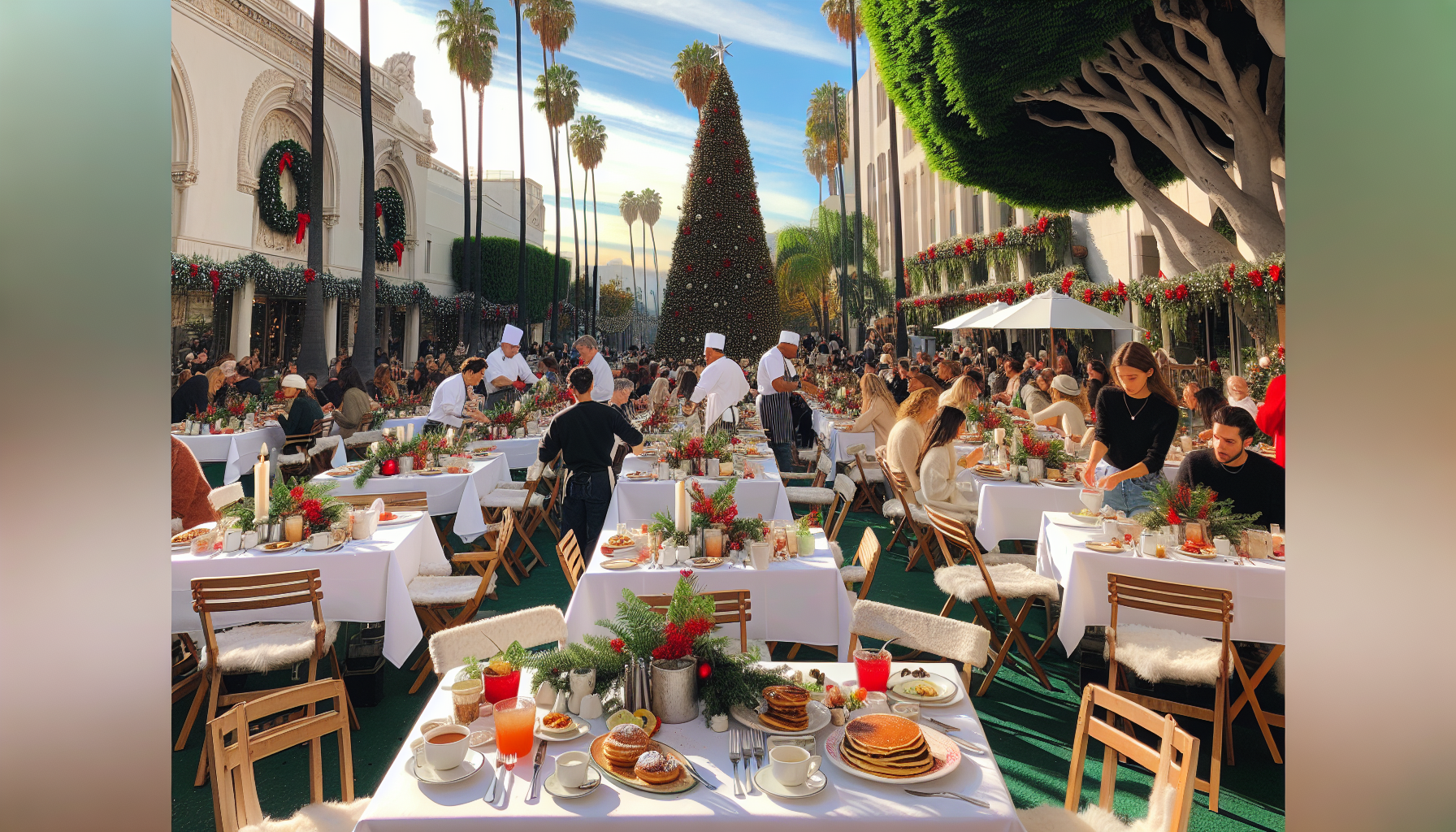Exploring Craft Contemporary
Craft Contemporary, formerly known as the Craft and Folk Art Museum (CAFAM), is a hidden gem in Los Angeles, California. As the only institution on the West Coast dedicated exclusively to showcasing contemporary craft, Craft Contemporary offers a unique and enriching experience for visitors. Let’s delve into the history of Craft Contemporary, its name change and mission, as well as the exhibitions it presents.
The History of Craft Contemporary
Craft Contemporary traces its roots back to 1975 when it began formal operations as the Craft and Folk Art Museum, succeeding the commercial gallery, The Egg and The Eye. This gallery displayed contemporary craft objects and folk art. The museum underwent a major renovation and reopened in May 1995, temporarily closing at the end of 1997, and reopening again in February 1999.
Edith R. Wyle, the founder of Craft Contemporary, played a pivotal role in its establishment. She led a group of women who founded the gallery The Egg and The Eye in 1965. Later, it was converted into the non-profit Craft and Folk Art Museum in 1973. Edith Wyle served as the museum’s Artistic Director from 1973 to 1984 before retiring and assuming the title of Founder/Director Emeritus (Wikipedia).
The Name Change and Mission
In 2018, Craft Contemporary’s board of directors made the decision to change the institution’s name to Craft Contemporary, reflecting the shift in the perception of craft art from being traditional to a contemporary art form rooted in the present. The name change was officially announced in January 2019 by Executive Director Suzanne Isken (Wikipedia).
The mission of Craft Contemporary is to showcase both established and emerging artists and designers, with a particular focus on those who are often underrepresented in larger art institutions. The museum is recognized for its support of early career artists who later gain recognition from mainstream art institutions. Craft Contemporary aims to challenge and expand the boundaries of craft, encouraging dialogue and exploration within the field.
Exhibitions at Craft Contemporary
Craft Contemporary presents a diverse range of exhibitions that highlight the intersection of art and craft. These exhibitions provide a platform for both established and emerging artists to showcase their work. Craft Contemporary is known for its commitment to promoting craft and supporting artists who push the boundaries of the medium.
Some notable exhibitions held at Craft Contemporary include “ART IRAN: Falling into Language” and “Power in Every Thread: Maria A. Guzmán Capron and Minga Opazo”. These exhibitions demonstrate the museum’s dedication to showcasing the power and versatility of craft in contemporary art.
Craft Contemporary is a must-visit destination for art enthusiasts and those interested in exploring the vibrant world of contemporary craft. With its rich history, mission to support artists, and engaging exhibitions, Craft Contemporary offers a unique and inspiring experience for visitors of all ages.
Visiting Craft Contemporary
If you’re looking for a unique and immersive museum experience in Los Angeles, Craft Contemporary is a hidden gem worth exploring. Here’s everything you need to know about visiting Craft Contemporary.
Location and Hours of Operation
Craft Contemporary is located at 5814 Wilshire Blvd., Los Angeles, CA 90036. The museum is conveniently situated in the heart of Los Angeles, making it easily accessible to visitors. Whether you’re a local or a tourist, Craft Contemporary is a must-visit destination.
The museum operates from Tuesday to Sunday, welcoming visitors between 11 AM to 5 PM. Please note that the museum is closed on Mondays, so plan your visit accordingly. With its convenient operating hours, you can easily incorporate a trip to Craft Contemporary into your day.
Admission and Accessibility
Craft Contemporary offers a variety of admission options to suit different preferences. General admission for adults is $9, while seniors (65+) and students (with valid ID) can enter for $7. Admission is free for Craft Contemporary members and children under 10 years old.
The museum is committed to being an inclusive space, providing accessibility to all visitors. Craft Contemporary is wheelchair accessible, with ramps and elevators available for those with mobility needs. Additionally, service animals are welcome within the museum premises to ensure everyone can enjoy the experience.
The Craft Contemporary Shop
No visit to Craft Contemporary is complete without exploring the museum’s shop. The Craft Contemporary Shop is a curated haven featuring a thoughtfully selected range of unique items from local and international artisans. Here, you can discover and purchase intricate crafts, handmade jewelry, textiles, ceramics, and more.
The shop creates an environment of genuine excitement and delight within the museum, allowing visitors to take a piece of the artistry home with them. Whether you’re looking for a special gift or a memento of your visit to Craft Contemporary, the shop offers a wide selection of one-of-a-kind items that reflect the spirit of craftsmanship.
While Craft Contemporary is known for its extraordinary exhibitions, the shop provides an opportunity for visitors to support artisans and celebrate the beauty of craftsmanship. It’s a true treasure trove for those seeking unique and meaningful pieces.
Before planning your visit to Craft Contemporary, make sure to check their website for any updates on hours of operation and admission prices. Discover the magic of this hidden gem in Los Angeles and immerse yourself in the world of contemporary craft art.
Note: Craft Contemporary encourages social engagement to stay informed about their activities and events, fostering a sense of community and keeping individuals connected with the museum’s offerings (Craft Contemporary). They also coordinate a diverse range of hands-on workshops related to their exhibitions, allowing friends and families to spark creativity, appreciate crafting by hand, and engage with one another. The museum collaborates with community organizations in Los Angeles to bring artists and crafters together for group projects and special events, fostering a sense of community engagement and creativity (Craft Contemporary).
Engaging with Craft Contemporary
Craft Contemporary is not just a museum to visit, but a place to actively engage with craft and creativity. The museum offers various workshops and programs, community engagement initiatives, and ways to support their mission.
Workshops and Programs
Craft Contemporary coordinates a diverse range of hands-on workshops related to their exhibitions. These workshops allow friends and families to spark creativity, appreciate crafting by hand, and engage with one another. Led by professional artists, these workshops provide creative opportunities for the public to engage with art.
Participating in these workshops can be a wonderful way to learn new techniques, explore different materials, and develop your artistic skills. Whether you’re a beginner or an experienced crafter, there’s something for everyone. The museum’s workshops are often tied to their current exhibitions, providing a deeper understanding and connection to the artwork on display.
Community Engagement Initiatives
Craft Contemporary collaborates with community organizations in Los Angeles to bring artists and crafters together for group projects and special events. By fostering these partnerships, the museum creates a sense of community engagement and creativity. These initiatives allow individuals to connect with others who share a passion for craft, fostering a supportive and inspiring environment (Craft Contemporary).
Engaging with these community initiatives can provide opportunities to network, collaborate, and learn from fellow craft enthusiasts. It’s a chance to share ideas, gain inspiration, and contribute to the vibrant craft community in Los Angeles.
Supporting Craft Contemporary
Craft Contemporary emphasizes the importance of donors in supporting its mission. The museum describes itself as the friendliest museum in Los Angeles and stresses the reliance on donors to reveal the potential of craft through exhibitions, online programs, and workshops. Supporting the museum is a way to contribute to the preservation and promotion of craft art.
There are several ways to support Craft Contemporary. You can become a member, which offers benefits such as free admission, discounts at the museum shop, and exclusive access to special events. Donations, both small and large, are also greatly appreciated and help fund exhibitions and educational programs. By supporting Craft Contemporary, you can play a vital role in nurturing and showcasing the world of craft.
When visiting Craft Contemporary, don’t forget to explore their museum shop. It features a curated selection of unique items from local and international artisans. It’s the perfect place to discover and purchase craft items, supporting both the museum and the talented artists behind the creations.
Engaging with Craft Contemporary through workshops, community initiatives, and supporting their mission not only allows you to appreciate the world of craft but also contributes to the vitality of the craft community in Los Angeles. It’s a chance to connect with others, learn new skills, and support the arts.
Notable Artists at Craft Contemporary
Craft Contemporary is renowned for its commitment to showcasing both established and emerging artists, providing a platform for creativity and innovation. The museum has played a significant role in supporting artists who are often underrepresented in larger art institutions. Here are a few notable artists whose careers have been nurtured and supported by Craft Contemporary:
Betye Saar and Timothy Washington
Betye Saar and Timothy Washington are among the notable artists who have had their careers supported by Craft Contemporary. These visionary artists have made significant contributions to the art world, and their work reflects a deep exploration of cultural identity, history, and social issues.
Gronk and Beatriz Cortez
Gronk and Beatriz Cortez are emerging artists who have gained recognition in the art world thanks to the support and platform provided by Craft Contemporary. Their artistic practices encompass a diverse range of mediums and themes, pushing boundaries and challenging conventions.
John Riddle and Emerging Artists
John Riddle is another artist whose career has been supported by Craft Contemporary. His artistic vision and skill have earned him recognition, and he stands as an example of the museum’s commitment to fostering emerging talent.
Craft Contemporary takes pride in exhibiting both established and emerging artists, providing them with the opportunity to showcase their work and gain recognition. The museum’s dedication to supporting early career artists who later become recognized by mainstream art institutions is commendable, and it continues to contribute to the vibrant and diverse art scene in Los Angeles. To learn more about Craft Contemporary and its featured artists, visit their official website at Craft Contemporary.
The Fusion of Art and Craft
In the world of contemporary art, there is a fascinating fusion taking place between traditional craft techniques and modern artistic expression. Artists are exploring and embracing traditional practices such as weaving, embroidery, ceramics, and woodworking, and infusing them with contemporary concepts to create captivating works of art. This blending of art and craft opens up new possibilities for storytelling, exploration of identity, and reimagining cultural heritage.
Traditional Craft Techniques in Contemporary Art
Contemporary artists are reinvigorating traditional craft techniques by infusing them with contemporary ideas and social commentary. They are pushing the boundaries of art by combining age-old techniques with modern aesthetics and concepts. Through their work, artists like Tanya Aguiñiga and Shalene Valenzuela are creating a dialogue between the past and the present, bridging the gap between traditional craft and contemporary art (Artsy).
By incorporating traditional craft techniques into their artwork, these artists bring a sense of craftsmanship, skill, and cultural heritage to their pieces. They use materials like textiles, clay, and wood to create intricate works that highlight the beauty and complexity of traditional crafts. This integration of traditional craft with contemporary art not only revitalizes these age-old practices but also challenges conventional notions of art and craft.
Pushing Boundaries and Challenging Conventions
The blend of art and craft in contemporary art challenges conventional boundaries and definitions. Artists are blurring the lines between what is considered fine art and what is categorized as craft. This fusion allows for experimentation with materials, techniques, and design, resulting in unique and thought-provoking artworks.
The integration of traditional craft techniques with modern aesthetics and conceptual ideas pushes the boundaries of what is possible within the art world. It allows artists to break free from traditional constraints and explore new avenues of creativity. This innovative approach to art and craft has given rise to a vibrant and evolving art landscape, where artists are constantly redefining and expanding the boundaries of their practice.
The Impact of Art and Craft in Society
The fusion of art and craft goes beyond the realm of aesthetics. It has a profound impact on society as a whole. Through their work, artists using traditional craft techniques in contemporary art offer a fresh perspective on cultural heritage, identity, and storytelling. They bring attention to the value of craftsmanship, the significance of traditional practices, and the importance of preserving cultural traditions.
These artists also contribute to the ongoing dialogue about the role of art and craft in society. They challenge preconceived notions, raise questions, and inspire conversations. The integration of traditional craft with contemporary art allows for a deeper exploration of societal issues, cultural diversity, and personal narratives.
In conclusion, the fusion of art and craft in contemporary art is a dynamic and exciting movement. It breathes new life into traditional craft techniques, pushes the boundaries of artistic expression, and has a profound impact on society. Through their innovative and thought-provoking works, artists are reshaping our understanding of art, craft, and their interconnectedness.
The Economic and Social Impact of the Arts
Art and culture play a significant role in society, not only enriching our lives but also contributing to the economy and fostering social connections. In this section, we will explore the economic and social impact of the arts, highlighting the contribution to the economy, the role in urban development, and the importance of arts and culture in building communities.
The Contribution of the Arts to the Economy
The arts sector makes a substantial contribution to the economy, both locally and nationally. In the United States, the arts contributed $877.8 billion to the GDP in 2017, accounting for about 4.5% of the total GDP and providing over 5 million wage-earning jobs across the American economy (Medium). Similarly, in Canada, the creative sectors contributed $59.7 billion to the GDP, creating 784,500 jobs, equivalent to 2.7% of the total GDP and 3.5% of Canada’s jobs (Medium).
The arts industry encompasses a wide range of sectors, including visual arts, performing arts, film and television, design, and more. These sectors generate economic activity through ticket sales, artwork sales, tourism, cultural events, and the employment of artists and cultural workers. The arts not only provide direct employment opportunities but also support other industries such as hospitality, tourism, and retail.
The Role of the Arts in Urban Development
Cities that prioritize and invest in arts and culture benefit from the positive impacts on urban development. According to Richard Florida, access to talented and creative individuals is vital for modern businesses to thrive, influencing where businesses and commerce establish themselves. Vibrant arts and music scenes are crucial for attracting and maintaining the creative class within cities.
Artistic and cultural initiatives can transform neighborhoods, attracting residents, businesses, and visitors. The presence of museums, galleries, theaters, and cultural events contributes to the vitality and livability of urban areas. These cultural amenities create a sense of place, enhance community identity, and make cities more attractive to residents and tourists alike.
The Importance of Arts and Culture in Building Communities
Arts and culture play a vital role in building and strengthening communities. The Knight Foundation’s Soul of the Community Initiative conducted a survey of 43,000 citizens from 43 cities, revealing that the aesthetics of a place, including its art, parks, and green spaces, were considered more significant factors driving attachment compared to aspects like education, safety, and the local economy.
Engaging with the arts fosters a sense of belonging and attachment to a community. Vibrant arts scenes contribute to the creation of “sticky streets,” where public art, interactive elements, and engaging aesthetics enhance local shopping districts. These elements increase community attachment, enhance the shopping experience, and create unique and memorable environments. By promoting local artists and cultural events, communities can foster a sense of pride and identity.
Moreover, engaging with artists and musicians has been proven to have a positive impact on community safety and well-being. Interventions such as installing restored pianos in public spaces have transformed areas, attracting people to listen to music and significantly reducing issues like drug deals, loitering, and vandalism in the vicinity (Medium).
Craft Contemporary, along with other arts institutions, plays a vital role in contributing to the economic and social fabric of Los Angeles. By supporting and engaging with the arts, we can create vibrant communities, foster economic growth, and enrich the lives of individuals and families in our city.



